The Ancient Roots of Fermentation
Fermentation is one of humanity’s oldest and most ubiquitous food preservation techniques. As early humans transitioned from hunting and gathering to agriculture, they sought methods to make crops last through seasons. Fermentation proved an ingenious solution, allowing people to enjoy vegetables, dairy, meats and more even when fresh ingredients were scarce. Over thousands of years, the practice spread to nearly every culture. Today, fermented foods hold an important place in cuisines across the globe.
The earliest recorded evidence of fermentation dates back over 7,000 years to Neolithic China. Archaeologists have uncovered pots once used to make rice wine, employing mold cultures to trigger alcohol production through enzymatic conversion of starch. However, humans likely started experimenting with fermentation even earlier. Any agriculture-based community would have observed the natural process accidentally. For instance, fruits ferment with ambient yeasts in the air, tubers undergo lactic acid fermentation and grains get converted to alcohol by fungi and bacteria. Early fermented foods were probably similar to these spontaneous concoctions.
The notion that microorganisms cause fermentation only emerged in the past two centuries. Yet through trial and error, our ancestors mastered techniques to encourage desirable transformations. By brewing ales and preserving vegetables in fermentation across cultures, they ensured a year-round food supply. Flavor and nutrition also improved through the chemical reactions. Further, fermented foods tend to carry fewer pathogens than their raw counterparts, an unintentional benefit that made diets safer.
One theory suggests that the motivation behind fermenting dairy into cheese was to decrease lactose content for lactose-intolerant communities. As pastoralist tribes migrated across Asia and Europe, they depended heavily on dairy. Fermented milk products like kefir, yogurt, butter and cheeses became dietary staples. These communities also made kumis, a mildly alcoholic fermented mare’s milk still popular in parts of Eastern Europe and Central Asia. Archaeological evidence proves that by 8000 BCE, Neolithic farmers were already using pottery vessels to age cheeses.
Meanwhile in the Fertile Crescent, early civilizations like Sumeria, Babylon and ancient Egypt brewed beer from barley and emmer wheat. Hieroglyphics and poems depict beer as a staple beverage. Egyptian texts from 5,000 years ago provide the most detailed contemporary account of ancient brewing techniques. Their beer had a porridge-like texture and was consumed through straws. Recipes combined bread and malt, occasionally with dates for added sweetness. These early beers carried bacteria that caused further fermentation and natural carbonation.
Early oenology also flourished in West Asia. As winemaking technology diffused, viticulture took hold in ancient Greece, Italy, France and beyond. Advances like oak barrel aging and cork stoppers improved quality. By late antiquity, wine became such a prestigious drink that Mediterranean vineyards expanded significantly. Regional differences developed, showcasing how fermenting grape juice offers remarkable versatility.
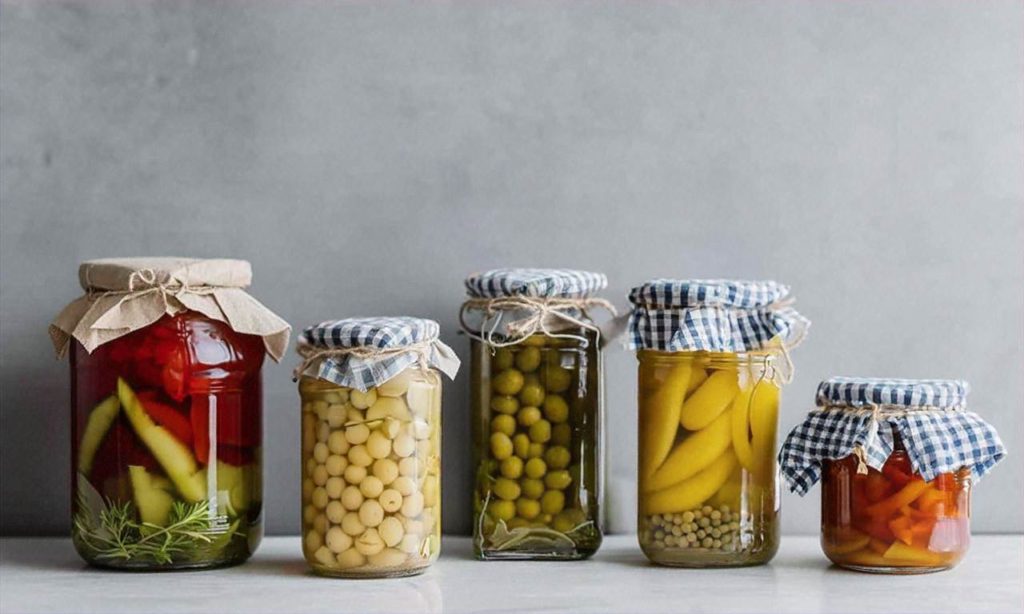
With seafaring and the Silk Road trade network, ingredients and ideas spread globally. Asian preserves like miso, soy sauce, pickled vegetables and fish sauce made their way to Japan, Korea and Southeast Asia. Vinegars, sauerkrauts, olives, raisins and cured meats became commonplace in Europe. The practice of culture-driven fermentation using specific microbial strains was also becoming more refined. By incorporating salt, oil, spices and even decorative weights, people could produce ferments tailored to local taste. These traditions endured for millennia and continue delighting palates today.
So while the molecular science behind fermentation only gained clarity recently, its transformative properties have long been clear. Preserving summer’s bounty for winter, ensuring food safety, improving flavor and nutrition while also crafting delicious drinks – fermentation offered ancient communities major advantages. Evidence shows that people across the globe independently started experimenting with vegetables, cereals, dairy, meats and fruit. Through sharing ideas and adding creative touches over thousands of years, fermentation practices evolved as a defining aspect of food culture everywhere from Asia, Europe, Africa to the Americas.
Making Sauerkraut in Medieval Europe
Sauerkraut has its origins in medieval Europe, where the process of fermenting cabbage provided a vital way for people to preserve nutrients and prevent scurvy during the winter months. The term “sauerkraut” comes from the German words “sauer” meaning sour and “kraut” meaning cabbage, reflecting the tart flavor produced by lactic acid during fermentation.
While the origins of sauerkraut are uncertain, some of the earliest written references to preserving cabbage date back to the 13th century in European texts. The natural fermentation process allowed medieval communities to store cabbage for upwards of six months, providing much-needed vitamin C and probiotics through the winter when fresh produce was scarce.
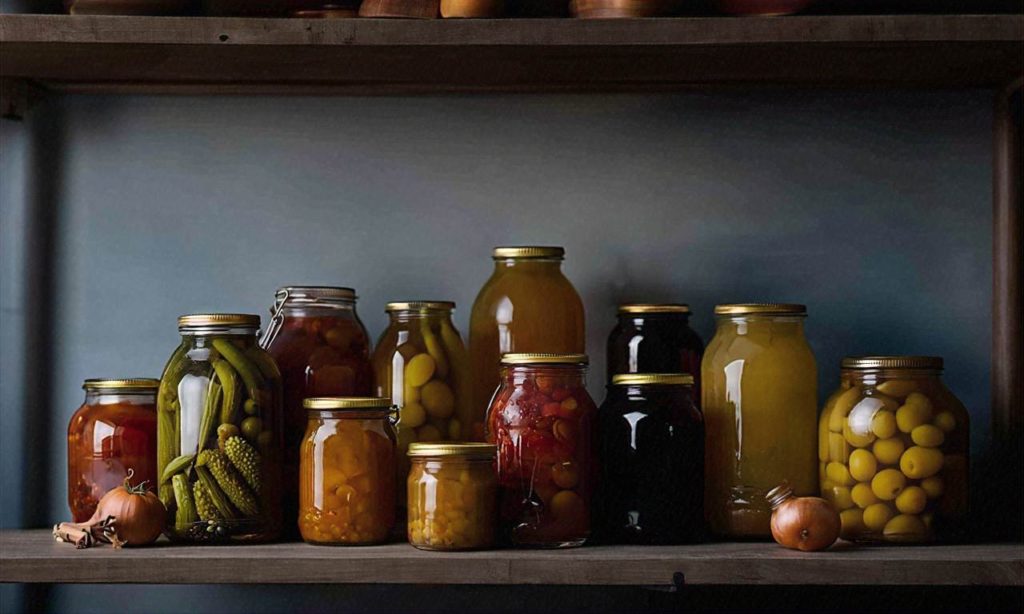
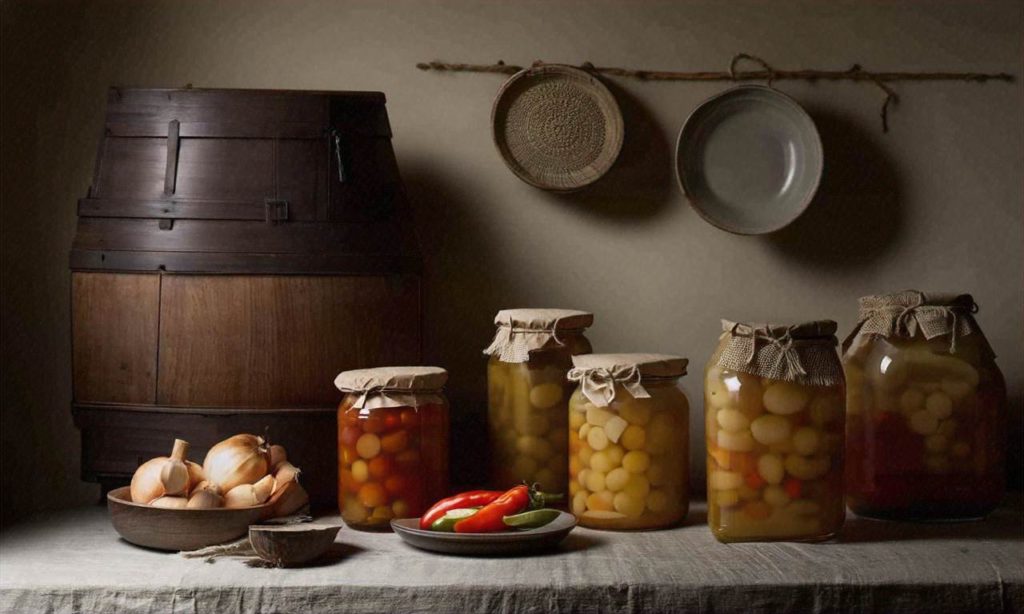
Throughout the Middle Ages, Germanic and Slavic peoples were among the foremost innovators and consumers of sauerkraut, which became closely associated with various cultural traditions across Central and Eastern Europe. Reflecting its importance, by the 15th century, the English word “cabbage” was synonymous with “sauerkraut” due to the ubiquity of fermented cabbage dishes.
The cooler climate of northern and eastern Europe was especially suitable for growing late-season cabbage ideal for fermentation. Following the autumn harvest, medieval techniques entailed layering cabbage with salt in wooden barrels or ceramic crocks. Over four to six weeks, an anaerobic environment would develop, dominated by lactic acid bacteria that lowered pH levels and prevented growth of pathogenic bacteria. This natural process of lacto-fermentation resulted in the tangy, salty flavor and long shelf life associated with sauerkraut.
In some areas, sauerkraut was closely associated with pork dishes, as pigs were a common source of meat and fat during winter months. Cookbooks show sauerkraut incorporated into hearty peasant soups and stews, baked into savory pies and tarts, or simply eaten as a side dish. As a high-fiber food rich in vitamins, sauerkraut provided balance to pork and cured meats, which medieval doctors warned could cause melancholy if overconsumed.
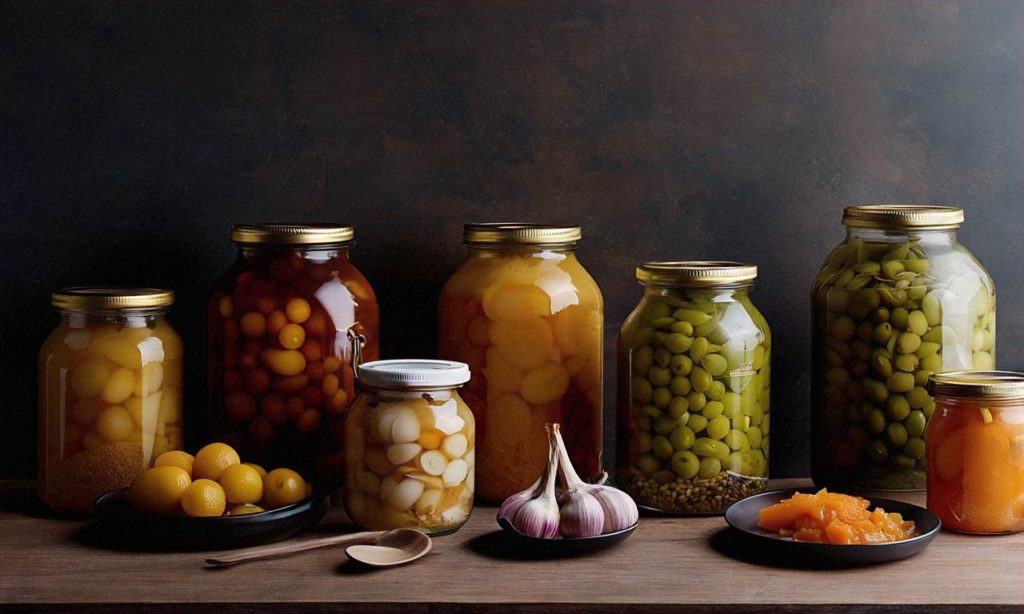
Sauerkraut preparation and consumption took on strong regional identities tied to local ingredients and customs. In France, acidic white wines were sometimes added to the salted cabbage for fermentation. Slavic traditions called for including whole cranberries, caraway, apples or juniper berries to complement the tartness. Across the Germanic lands, pork fat and sausage were often cooked right into the kraut itself.
Medieval poetry and songs highlight sauerkraut’s cultural significance beyond sustenance alone. An English poem from 1375 depicts peasants joyfully stomping cabbage to make “sour crout” after the harvest. A 16th century Polish song sees a maiden dreamily imagine herself transforming into sauerkraut to win her beloved’s affection.
While sauerkraut originated as a means of survival, over centuries of refinement, its unique flavor profile became intrinsically rooted in Central European food culture and identity. The tradition of transforming humble cabbage into sour, tangy kraut would continue adapting as people carried their fermenting knowledge and tastes to new lands in later centuries.
Kimchi: Korea’s National Dish
Kimchi is synonymous with Korean cuisine and culture. This spicy, tangy, fermented vegetable dish is served at almost every Korean meal and is deeply ingrained in the country’s culinary identity. With a history stretching back thousands of years, kimchi is considered Korea’s national dish.
The origins of kimchi can be traced to the early days of the Three Kingdoms of Korea period (57 BCE–668 CE). During this era, vegetables were salted and fermented in order to preserve them during long winters when fresh produce was scarce. These early versions of kimchi lacked the red pepper flakes and complex seasonings associated with modern kimchi, as chili peppers were not introduced to Korea until the 16th century.
Over the centuries, kimchi evolved from a simple pickled vegetable into a complex, flavorful dish with regional variations found throughout the Korean peninsula. By the 12th century, during the Goryeo dynasty, writings mentioned kimchi’s growing popularity and the creation of many different varieties using ingredients like green onions, garlic, ginger, fermented seafood, and salted fish.
The introduction of chili peppers from Japan during the late 16th century brought the final defining ingredient to kimchi as we now know it. The dish transformed into the red, spicy, pungent food that represents the culmination of Korean culinary heritage passed down through generations.
Kimchi’s Growing Popularity
While kimchi has been a staple in Korea for centuries, its popularity has exploded globally in recent decades. This fermented dish has earned recognition from international organizations like UNESCO for its cultural significance. Health-conscious eaters have also embraced kimchi for its nutritional benefits as a probiotic food.
The traditional method of preparing kimchi relies on an arduous multi-day process of rubbing salt and seasoning into vegetables, then allowing the salted mixture to ferment in large earthenware jars buried underground. Today, while some Korean households continue these time-honored techniques, mass production allows busy modern families to enjoy ready-made kimchi from grocery store refrigerators.
With Korean pop culture and cuisine gaining immense international visibility, interest in Korea’s national dish continues to grow. As global palates expand, kimchi has become a gateway for experiencing authentic Korean flavors.
The Many Varieties of Kimchi
While napa cabbage kimchi may be the most well-known variety, kimchi actually encompasses a wide range of fermented vegetables with regional seasonal variations. In the summer, water kimchi features cucumber; in the fall, radish kimchi highlights Korean radishes; and green onion kimchi offers strong flavors of its namesake ingredient.
Other unique kimchi varieties showcase Korea’s coastal regions. Jeotgal kimchi incorporates salted seafood like shrimp, oysters, and fish, while myeolchi kimchi ferments small anchovy-like fish. Gat kimchi, from island communities, utilizes mature kimchi brine to quickly ferment green laver seaweed.
Beyond seasonal and regional differences, families across Korea have also developed their own kimchi recipes passed down through generations, resulting in a beautifully diverse range of flavors, textures, and ingredients. This tradition connects people to their heritage, community, and the land’s bounty.
The Taste of Korea
That mix of chili pepper heat, garlic pungency, ginger bite, and fermented tang makes kimchi instantly recognizable. The complex layers of taste and aroma reflect Korea’s culinary history – from early fermented vegetables, to royal court cuisine, to foreign influences, to modern innovations.
Beyond flavor, the culture of community and connection surrounding kimchi resonates deeply with Koreans and anyone who tries this iconic dish. Kimjang, the tradition of communally making kimchi in late fall, emphasizes sharing labor and strengthening bonds. Kimchi embodies the spirit of Korean culture – its people, seasons, regions, and history wrapped up in every crunchy, sour, spicy bite.
As kimchi continues spreading across the globe, this national dish introduces international audiences to the tastes, traditions, and spirit of Korea with every jar opened. The fermented flavors tell a story stretching back millennia while the communal culture behind it bridges cultures new and old. Each bite connects us to the past while welcoming new generations to experience and share Korea through its most iconic food.
The Rise of Tempeh in Indonesia
Tempeh is a traditional Indonesian food made by fermenting cooked soybeans with a Rhizopus culture. This hearty, nutritious food has ancient roots in Indonesia, but did not spread much beyond the island of Java until the late 19th and early 20th centuries. Since then, tempeh has steadily risen from an obscure regional food to a globally recognized symbol of Indonesian cuisine.
The earliest known reference to tempeh production in Indonesia comes from the 18th century Javanese manuscript Serat Sri Tanjung. But the origins of tempeh likely go back much further. Soybeans and other legumes have been present in Indonesian cuisine since at least the 13th century. And many traditional soy-based foods in the region, like tauco and kecap, are made by fermenting boiled soybeans with molds. So tempeh was probably invented centuries before the 18th century as a way to preserve soybeans using fermentation.
For most of its history, tempeh remained a fairly obscure food eaten mainly on the island of Java. But that started to change in the late 19th and early 20th centuries, when tempeh slowly spread to other islands of Indonesia. A few key developments helped drive the rising popularity of tempeh across Indonesia. One was the Nutrition Research Institute established by the Dutch colonial administration in Batavia (now Jakarta) in the 1920s. Scientists at the institute researched the nutritional value of traditional Indonesian foods, including tempeh, and found it to be high in protein. This helped raise tempeh’s prestige.
The rise of tempeh was also aided by Chinese Indonesian traders, who brought knowledge of fermentation techniques from China and applied these methods to tempeh production on a larger scale. This helped transform tempeh from a homemade village food to a commercial product sold widely across Indonesia.
By the late 20th century, fueled by population growth and movements from villages to cities, tempeh had become a vital source of protein for much of Indonesia. Today tempeh is integral to the Indonesian diet, with average national consumption estimated at nearly 7 pounds per person per year. It’s sold by hundreds of thousands of small producers, vendors and restaurants across the archipelago.
The rising popularity of meat analogues and plant-based protein in Western countries has also led to growing global interest in tempeh. It is now possible to find tempeh products in many supermarkets and health food stores in Europe, Australia and North America. But for most Indonesians today, tempeh remains an economical, nutritious and quintessentially Indonesian food – a symbol of the country’s cultural heritage.
Fermenting Chocolate in Ancient Mesoamerica
The prized cacao bean, which is used to make chocolate, has a long history of being transformed into delicious treats through the process of fermentation. This ancient technique likely originated among the pre-Columbian peoples of Mesoamerica such as the Olmec, Maya, and Aztec civilizations.
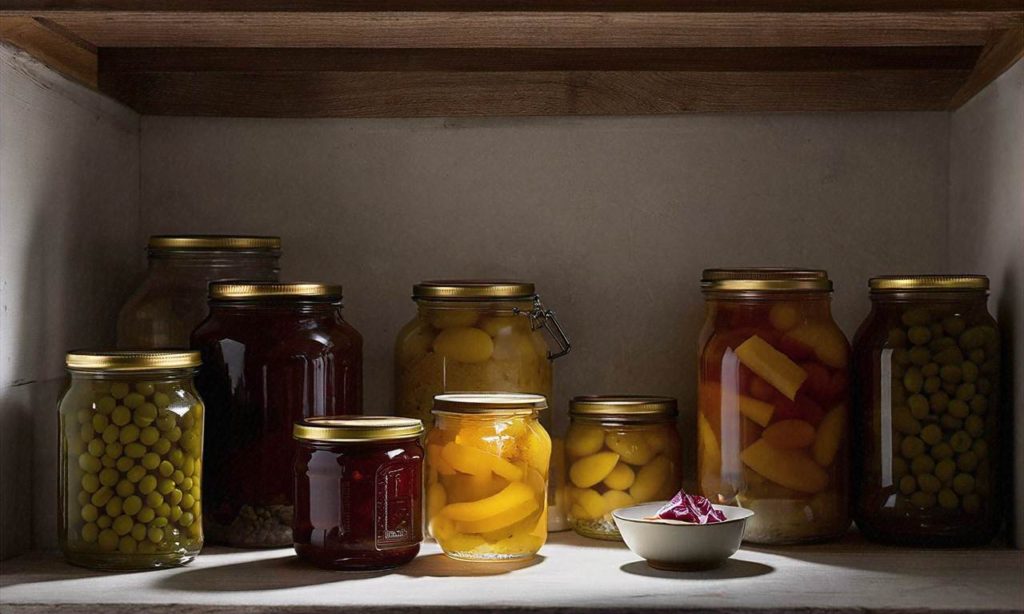
The tropical Theobroma cacao tree, from which cacao beans are harvested, grows in areas around the equator and has been cultivated in Mesoamerica for at least 3,000 years. The earliest known evidence of chocolate consumption has been traced back to 1900 BC among the Olmec. The word “cacao” itself comes from the Nahuatl language of the Aztecs.
To turn the raw cacao beans into edible chocolate products, they first needed to go through a process of fermentation. After being extracted from cacao pods, the beans and surrounding pulp would be placed into pits, boxes, bags, or piles to ferment for several days. Natural yeasts and bacteria would break down the pulp and trigger chemical changes in the beans, developing key flavors and darkening their color.
This fermentation process was a crucial step in preparing cacao beans before they could be dried, roasted, and ground into chocolate drinks or confections. Getting the fermentation right brought out important chocolate notes, while insufficient fermentation left unpleasant tastes. So over many centuries, Mesoamerican peoples perfected their techniques for properly fermenting cacao through hands-on experience.
Drinking chocolate beverages made from fermented, roasted, and ground cacao beans mixed with water became an integral part of Maya and Aztec culture. It was specially prized by elites and sometimes flavored with spices like vanilla and chili pepper. Chocolate drinks were closely linked to religious rituals and consumption was believed to have invigorating, aphrodisiac effects.
The Aztecs in particular were known to be avid chocolate drinkers. When the Spanish conquistador Hernán Cortés encountered Emperor Montezuma in the early 16th century, he described watching Montezuma consume a frothy cacao drink adorned with gold. Chocolate was so valuable among the Aztecs that cacao beans were even used as currency.
So while contemporary chocolate as we know it today took on sweeter forms after encounters with Europeans, ancient Mesoamerican civilizations led the way in developing inventive processes to ferment cacao beans and transform them into prized chocolate foods and drinks. Their pioneering chocolate culture continues to delight palates globally today. As we bite into chocolate treats, we’re enjoying the fruits of ancient Mesoamerica’s delicious fermentation discoveries.
India’s Spicy Pickles and Chutneys
Fermentation has been used in Indian cuisine for thousands of years to preserve foods and imbue them with complex, tangy flavors. India’s hot climate makes fermentation an ideal way to prevent spoilage of vegetables and fruits. The country has developed a remarkable range of pickled, fermented, and preserved foods that are an integral part of culinary traditions across its diverse regions.
One of the most popular fermented foods in India is the spicy Indian pickle, known locally as achar. These pickles are often made from vegetables like carrots, cauliflower, green mangoes, lemons, and chillies, mixed with spices like mustard, fenugreek, and asafoetida and preserved in oil with salts. The salt and oil prevents microbial growth while the spices impart pungency, aroma, and taste. Indian pickling techniques trace back to ancient times, with archaeological evidence showing that vegetables were preserved with oil and vinegar during the Indus Valley Civilization over 4000 years ago.
Over the centuries, pickling became a specialty in many Indian households, with families developing their own unique pickle recipes and techniques. Traditionally, the labor-intensive pickling process would begin in the summer months when vegetables and fruits were in abundant supply. The chopped produce would be sun-dried, salted, spiced, and mixed with oil in earthen pots to ferment for months, intensifying flavors before the pickles were ready for consumption. The prolonged fermentation period allows complex flavors to develop in the achars.
In Indian cuisine, chutneys are tangy-sweet condiments made from fruits, vegetables, and spices. Like pickles, chutneys are integral to Indian culinary traditions, consumed daily at meals to enhance the flavors of dishes. One of the most popular is the green coriander chutney, known as hari chutney in Hindi or dhaniya pudina chutney in Marathi. It brings together the cooling flavors of fresh coriander, mint, green chillies and a squeeze of lime. Other beloved chutneys are made from coconut, sesame seeds, tamarind, tomato, garlic, and mango.
What makes Indian chutneys unique is the skillful balance of sweet, spicy, salty, sour, and bitter taste elements. Complex chutneys depend on mindful layering of ingredients like sugar or jaggery, chili peppers, seeds, herbs, spices, and fruits. Regional variations in chutney recipes highlight localized culinary histories across India’s states.
In Southern states like Kerala, Andhra Pradesh and Karnataka, chutneys feature coconut, curry leaves, tamarind, and lentils. Northern chutneys incorporate yogurt, pomegranate seeds, pumpkin, and nuts. Western states like Gujarat and Maharashtra have an array of garlic, sesame, and chili pepper based chutneys. Regardless of regional variations, a unifying principle across Indian chutneys is the use of fermentation to develop complex flavors.
Both Indian pickles and chutneys depend on mixed lactic acid fermentation, relying on naturally occurring lactobacilli on the surface of vegetables to convert natural sugars into lactic acid, carbon dioxide, and other compounds through enzymatic activity. The increase in acidity not only provides the characteristic sour flavor but also suppresses harmful microbial growth that causes food spoilage. The chutneys also often incorporate spices with antimicrobial properties like red chili powder, black pepper, mustard seeds, curry leaves and garlic. The oil, salt and spices create an environment ideal for positive fermentation.
As with all traditionally fermented products, the desired sourness and flavor complexity develops slowly over weeks or months. Families would track the progress of their fermenting pickles and chutneys closely, occasionally tasting them to determine if the flavor and sourness had achieved the ideal peak before they were consumed. Well fermented pickles and chutneys can keep for over a year without refrigeration, thanks to the low pH and spices.
Today, Indian pickles and chutneys are produced commercially on a large scale to meet demand. However, traditional artisanal producers still thrive, with families perfecting age-old techniques and recipes across regions. Local bazaars and markets have an astounding variety, allowing people to sample different regional styles. For Indians across socioeconomic backgrounds, pickles and chutneys remain an essential part of the diet within everyday meals and special occasions.
With Indian migration increasing globally, Indian pickles and chutneys are also gaining international popularity. As people discover the incredible diversity of flavors achieved through fermentation of vegetables and fruits, perhaps pickles and chutneys will become more mainstream outside South Asia as well. They offer a healthy probiotic-rich alternative to increase the taste and nutrition of global cuisines.
Fermented Dairy from Nomads to Modern Day
Fermented dairy products have an extensive history, originating with nomadic herders and continuing to be a dietary staple across the globe today. As early humans transitioned from hunting and gathering to an agricultural lifestyle, the domestication of livestock like cows, goats, sheep and camels provided a ready source of nutritious milk. Fermentation emerged as a technique to preserve the nutrients and extend the shelf-life of this perishable food in hot climates. Over thousands of years, traditional fermented milks developed into staple foods and acquired cultural significance across Europe, Africa and Asia.
Archaeological evidence suggests herding cultures in Neolithic Europe were consuming yogurt and kefir as early as 5,000BC. As nomads traveled across the Eurasian steppes with their herds, similar cultured dairy foods appeared, from the leben of the Middle East to the kumis fermented mare’s milk of Mongolia. The mobility of pastoralist cultures facilitated the spread of these live bacterial cultures across borders. Fermented dairy products were a dietary mainstay for centuries, providing probiotics, protein and calories.
As globalization accelerated the exchange of ingredients and techniques, fermented milks became diversified by localization. Traditional European soured creams and buttermilk were brought to Colonial America, there evolving into regional specialties like Amish buttermilk doughnuts. Indian colonizers and traders brought yogurt-based drinks that developed into contemporary fare like the Sri Lankan king coconut yogurt. From Russian kefir and Scandinavian viili to Tibetan chhurpi, unique fermented dairy foods emerged across the globe. Many are still produced today using ancestral methods, retaining their significance.
Industrialization brought commercial manufacture and distribution of fermented dairy products, popularizing items like yogurt. Today, probiotic drinks and yogurts fill supermarket shelves, yet traditional artisanal versions made locally using ancestral starter cultures also persist. Meanwhile, innovators push boundaries, fermenting alternative bases like soy or nuts into dairy substitutes, or experimenting with new probiotic strains and funky flavors. The culmination is a global landscape where contemporary commercial probiotic drinks sit side-by-side with traditional ferments, all sharing common nomadic origins.
This diversity of fermented dairy foods provides modern eaters with options spanning refreshingly tart to decadently creamy. Yogurts, kefirs, skyr, filmjölk, chaas and other fermented milks offer a spectrum of textures and tastes. They supply beneficial live cultures that can boost gut health and digestion. Additionally, fermentation helps preserve nutrients like proteins and vitamins. Across cultures, fermented dairy remains a dietary staple supplying nutritional and functional benefits passed down from ancient nomads. The development of fermented foods across changing societies is part of the larger story told in the article “Fermentation Across Cultures: A History of Preserved Foods”. Whether handcrafted using time-honored traditions or mass-produced via modern methods, fermented dairy retains both importance and appeal today.
The Health Benefits of Fermented Foods
Fermented foods have been consumed for millennia across many cultures for both preservation and taste. However, modern science is also revealing numerous health benefits of fermented foods. As interest grows in gut health and probiotics, fermented foods are experiencing a major renaissance.
Fermented foods are rich in probiotics, which are live microorganisms that provide health benefits when consumed. Probiotics help populate our gut microbiome, which is the community of bacteria living in our intestines. Research over the past few decades has shown the incredible importance of our gut microbiome to nearly every aspect of our health. Consuming probiotic-rich foods helps diversify our gut microbiome and fend off harmful bacteria. This improves digestion, immunity, and even mental health.
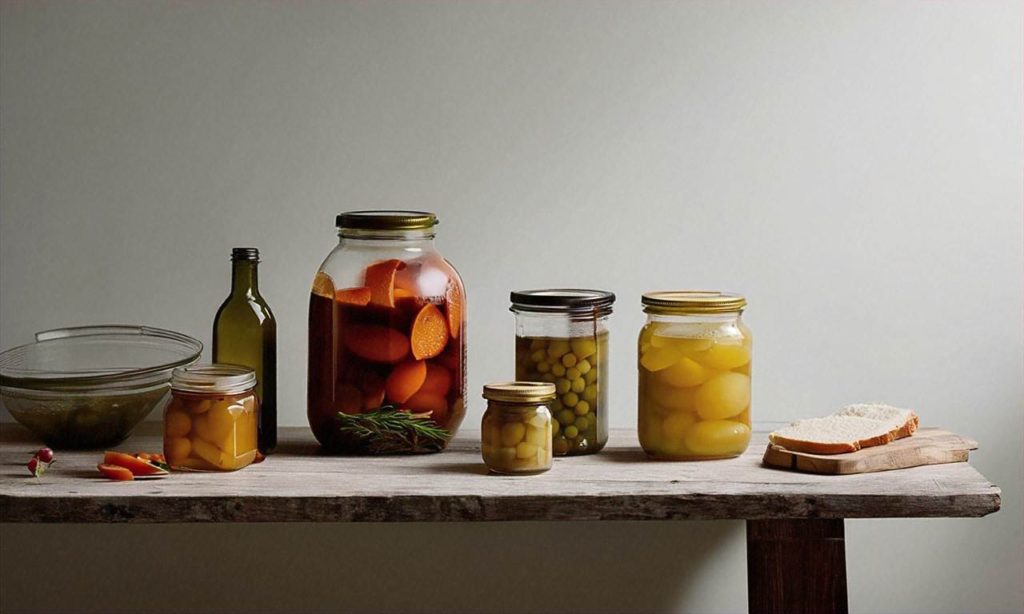
Many fermented foods are excellent sources of probiotics. These include yogurt, kefir, sauerkraut, kimchi, miso, tempeh, and kombucha. The fermentation process allows beneficial bacteria and yeast to proliferate, creating a rich microbial ecosystem. While probiotic supplements exist, eating fermented probiotic foods provides the additional nutritional benefits of the food itself. For example, yogurt delivers protein, sauerkraut contains fiber, and kimchi offers vitamin A.
In addition to probiotics, the fermentation process also preserves nutrients and breaks foods down into more digestible forms. For example, fermenting cabbage into sauerkraut produces isothiocyanates, which have cancer-fighting effects. Fermenting soybeans to make tempeh increases the bioavailability of soy’s isoflavones, which act as antioxidants in the body. Fermented dairy products are easier to digest due to the pre-digestion of the lactose during fermentation.
The enhanced nutritional profile of fermented foods combined with their probiotics content makes them powerhouses for health. Studies have linked the consumption of fermented foods like yogurt, kefir, sauerkraut, kimchi and kombucha to benefits such as:
– Enhanced digestive health
– Increased vitamin levels

– Improved immunity
– Lower inflammation
– Better weight maintenance
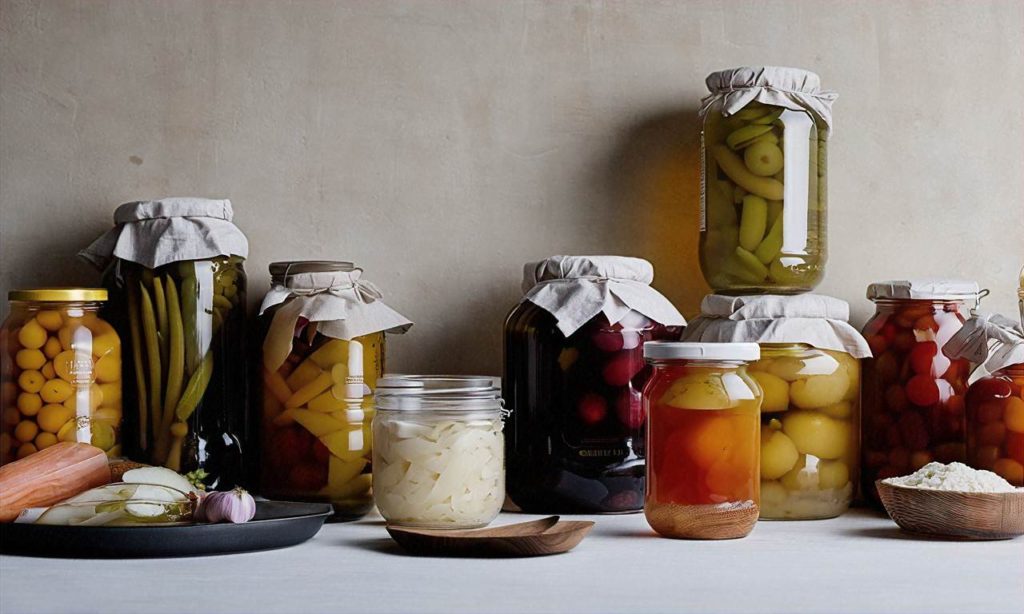
– Positive impacts on heart health markers like cholesterol and blood pressure
– Protective effects against some cancers
– Anti-diabetic properties
– Improved mental health and cognitive function
Many traditional cultures intuitively understood these health benefits. They relied on fermented foods not just for preservation, but also to prevent disease and maintain wellbeing. Today science is affirming this ancient wisdom. The microbiome research renaissance combined with our renewed interest in probiotics and gut health is thrusting fermented foods into the mainstream.
The health benefits of fermented foods make “Fermentation Across Cultures: A History of Preserved Foods” a vital area of study. Understanding how to harness fermentation’s health properties will only become more crucial as we seek to improve human health. Whether it’s kimchi in Korea, sauerkraut in Germany, or kefir in Eastern Europe, fermented foods deserve appreciation as both cultural touchstones and dietary superfoods. Their place at our tables leads not just to delicious flavors, but enhanced wellbeing.
The Fermented Food Renaissance
Over the past decade, fermented foods have experienced a major resurgence in popularity, thanks in large part to greater awareness of their health benefits as well as a renewed interest in traditional food preservation techniques. This “fermented food renaissance” has seen consumer demand for products like kombucha, kimchi, sauerkraut, kefir and tempeh grow exponentially across North America and Europe.
The rising popularity of probiotic supplements over the past 20 years paved the way for the more recent fermented foods craze. As scientific research increasingly demonstrated the importance of healthy gut flora for overall wellness, health-conscious consumers began seeking out fermented options as a tasty way to ingest probiotics. The probiotic supplement market, while still massive, has stagnated in recent years; fermented foods, on the other hand, continue to grow in popularity as more people discover their unique flavors and functional benefits.
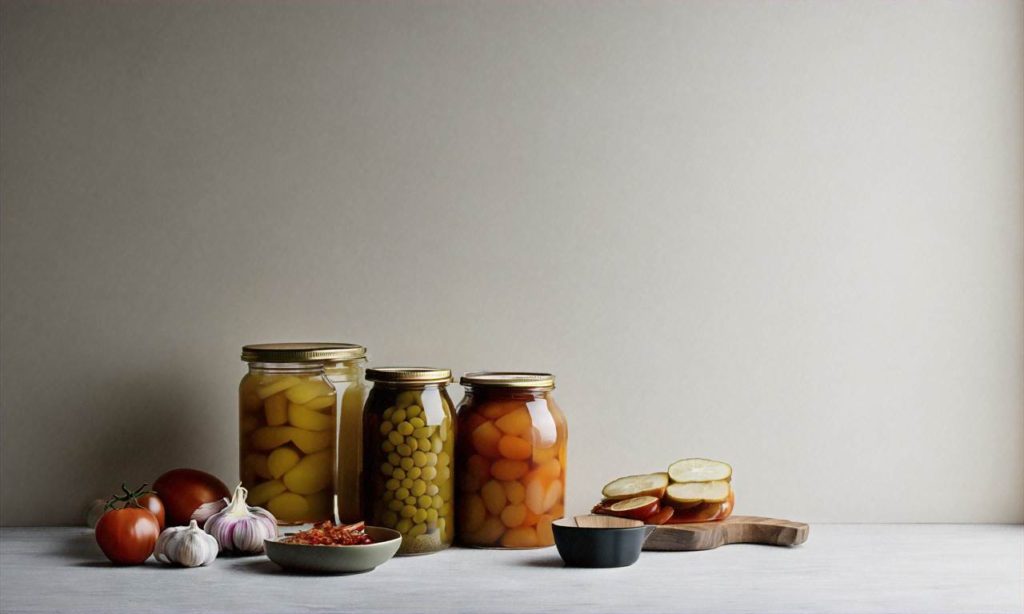
While Asian cuisines have long incorporated fermented foods like kimchi, miso and tempeh, many Westerners had not been exposed to these flavors until relatively recently. As globalization led to increased access to international ingredients and food media expanded its focus beyond European and North American cuisines, many Western cooks began experimenting with fermentation. Soon kimchi, kombucha and kefir were popping up everywhere from high-end restaurants to ordinary supermarkets. Cookbooks and blogs dedicated to fermentation also proliferated, as the technique stopped being seen as obscure or intimidating.
Growth of the sustainable food movement has also contributed to the fermented food renaissance. For environmentally-conscious consumers looking to reduce food waste, fermentation offers a compelling way to preserve seasonal vegetables and utilize food scraps that would otherwise be discarded. The artisanal pickling, canning and preserving movement dovetails neatly with the fermentation comeback, as these methods allow people to create zero-waste, probiotic-rich foods in their own kitchens.
Commercial success stories like GT Kombucha, Farmhouse Culture and Wildbrine brought fermented foods into mainstream visibility, proving that there was mass market demand for these previously niche products. Large natural food companies like Kraft Heinz have also invested significantly in fermented food startups, aiming to capitalize on the category’s explosive growth. Venture capitalists now see fermented foods as a hot investment area full of untapped potential.
While much of the initial demand for fermented foods may have been driven by health-conscious early adopters, today these foods are becoming more popular with average consumers seeking new taste experiences. No longer viewed as obscure or unappetizing by Western palates, fermented foods now have an undeniable “cool” factor. From a Korean fried chicken joint serving kimchi to a trendy cafe offering beet kvass, ferments have become ubiquitous on menus. Many chefs now regularly incorporate fermented ingredients to add unique flavors and textures to their dishes.
The DIY ethos of the fermented food renaissance has also opened up opportunities for culinary experimentation and the preservation of local food traditions. Home cooks can ferment their garden vegetables, local fruits or foraged foods using ancient techniques adapted to modern kitchens. This has allowed traditional pickled, fermented and preserved regional specialties in danger of being forgotten to find new life. In the age of globalized corporate food, fermentation offers a way to celebrate hyper-local ingredients and food heritage.
While no one can say for sure how long the fermented food craze will last, it seems unlikely to fade away anytime soon given the continued scientific validation of probiotics’ health benefits. If anything, we are still just scratching the surface of fermentation’s potential in the West. As more people discover the joys of homemade sauerkraut, sourdough, kefir and other ferments, these foods are destined to become dietary staples rather than passing fads. The fermented food renaissance has only just begun.
Fermentation Techniques and Ingredients Across Cultures
Fermentation is one of humanity’s oldest methods of food preservation, with evidence indicating our ancestors were making wines, beers, breads, cheeses, and other fermented foods as early as 7,000 BC. Over the millennia, nearly every culture across the globe has developed its own unique fermented foods using locally available ingredients and passed-down techniques. Exploring fermentation across cultures reveals an incredible diversity of preserved foods, as well as some common threads in preparation methods that continue to this day.
One of the most ubiquitous fermentation techniques worldwide is lactic acid fermentation. This process relies on lactic acid bacteria (LAB) converting sugars into lactic acid under anaerobic conditions. The increase in acidity preserves the food while also providing distinctive sour flavors. Common lactic acid fermented foods include sauerkraut, kimchi, pickled vegetables, yogurt, kefir, some cheeses, and soybean pastes like miso and tempeh. Though the ingredients vary greatly across cultures, the underlying technique of lacto-fermentation remains essentially the same.
Alcoholic beverage production via yeast fermentation is another near-universal fermentation method. By converting sugars into alcohol and CO2, yeast fermentation preserves sugary fruit and grain juices while generating beer, wine, sake, and other beloved potables. The available ingredients and local tastes lead to very different end products, however – from South America’s chewy chicha made from corn, to Ethiopia’s tej honey wine, to Belgium’s hundreds of distinct beers. Yet the fermentation process catalyzed by brewer’s or wine yeast links them all.
In some cases, fermentation techniques combine microbial activity with external influences for preservation. For instance, when making igunaq – an Inuit dish of fermented meat – seal, whale, caribou, birds, and fish are buried in the Arctic permafrost, allowing enzymes and ambient microbes to cure the meat over months or years. The frigid conditions prevent rotting while the proteins break down, developing a signature funky, cheese-like flavor. A similar effect occurs with rakfisk – Norwegian fermented trout – which is simply salted and stored for months in cold cellars before being eaten.
Fermented foods also showcase distinctive local ingredients that impact their flavor and nutrition. Asian ferments like tempeh, oncom, and natto rely on soybeans and fungi, producing nutty, mushroom-like tastes. Russian kvass and Korean makgeolli feature fermented bread or rice, while Brazilian tucupi utilizes bitter manioc root. Fermented honey and nectar generate unique flavors in tej and pulque compared to barley and grape based beers and wines. Wild local microbes – from the pine-forest air used in Gammelost cheese to cherry blossom yeasts in Sakura beer – can also contribute distinct regional flavors.
Despite this incredible diversity of ingredients and techniques, many underlying methods of food preservation via microbial activity and enzyme action remain consistent across cultures. As globalization continues, we have the exciting opportunity to explore traditional ferments from around the world – discovering new flavors and concepts while recognizing the common threads of this beloved, ancient culinary craft. Whether it’s kimchi from Korea, boza from Turkey, or sourdough from San Francisco, fermented foods truly bring us together even as they celebrate regions’ unique cultural identities.
Experiencing Global Cuisine Through Ferments
Fermented foods have been an integral part of cuisines around the world for thousands of years. As we explore the history of preserved foods across cultures, we can also experience global cuisine through the joy of ferments.
Fermentation not only helps preserve foods, but it also transforms ingredients into entirely new taste sensations. Sauerkraut, kimchi, kefir, tempeh, pickles, and more – these tangy, funky, sour, and umami-rich foods open up a world of flavors.
Many iconic dishes simply wouldn’t exist without fermentation. Can you imagine Korea without the spicy kick of kimchi or Germany without tangy sauerkraut? Or India without the traditional pickles and chutneys that accompany every meal? The unique flavors and textures of fermented foods are woven into the cuisines of cultures worldwide.
Beyond taste, fermented foods also provide health benefits. They are packed with probiotics, which support digestive and immune health. The fermentation process even increases the bioavailability of nutrients in ingredients. As interest in gut health and functional foods grows, ferments are more relevant than ever for a healthy diet.
Here are some ways you can experience global cuisine through the wonder of fermentation:
Try Iconic Fermented Dishes from Around the World
Expand your culinary horizons by seeking out iconic fermented foods from various cultures. Sample real-deal German sauerkraut, crispy Korean kimchi pancakes, pungent Lao papaya salad, Indonesian tempeh stir fries, Russian kvass fermented bread drink, and more. Taste how fermentation transforms simple ingredients into new depths of flavor.
Make Cultured Dairy Products
Cultured dairy products using fermentation techniques have their origins among nomadic herders worldwide. Bring global flavors into your morning yogurt or kefir by adding spices like cardamom, cinnamon, and ginger. Swirl in jams like fig, apricot, and cherry. Top with nuts, seeds, or fresh and dried fruits. Sweeten with a drizzle of honey for a nourishing and delicious start to your day.
Explore Fermented Vegetable Medleys
Nearly every culture has its own twist on fermented vegetables. Create your own global fermented medleys at home. Start with a base of cabbage or radishes, then add your choice of spices, herbs, fruits, vegetables, garlic, onions, ginger and more. Ferment your custom vegetable medley to unique tastes. Top with olive oil, nuts, seeds, cheese or use to stuff dumplings, flatbreads and more.
Host a Fermented Foods Potluck
Gather friends and sample fermented foods from around the world by hosting a fermented foods potluck. Ask each guest to prepare a fermented dish inspired by a different country or region. Try Korean kimchi, German sauerkraut, Russian kvass, Indian mango pickle, Nigerian fufu, Japanese miso soup, Mexican tepache fruit drink and more. Share stories and cultures over the communal table.
Learn Traditional Fermentation Methods
Many cultures worldwide have perfected fermentation as a food preservation technique over generations. Seek out opportunities in your community to learn traditional artisanal fermentation methods first-hand from various cultures. This may include workshops on Japanese koji fermentation, Indian pickling techniques, Mesoamerican cacao bean fermenting and more. Learn to ferment foods using time-honored techniques.
Grow Ingredients for Fermentation
Connect more deeply with fermented foods by growing your own ingredients. Plant a cabbage patch for sauerkraut or kimchi. Grow radishes and daikon for lacto-fermented pickles. Raise cucumbers for brining into pickles. Cultivate fruits and vegetables that you can incorporate into fermented chutneys and salsas. Tend an herb garden to flavor fermented creations. Grow greens for nutritious fermented juices.
By experiencing fermented foods, you tap into generations of preserved foods history across many cultures worldwide. Let fermented fare be your passport to culinary adventures and traditions from around the globe!
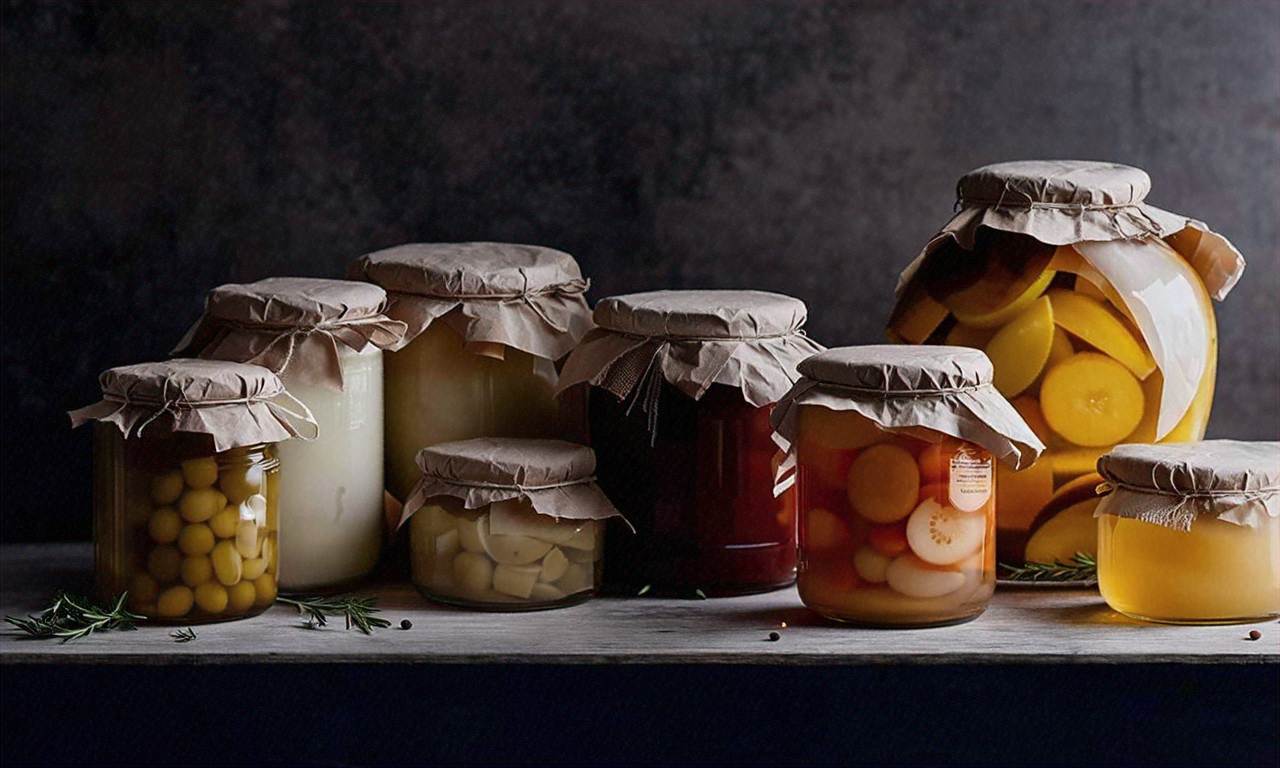
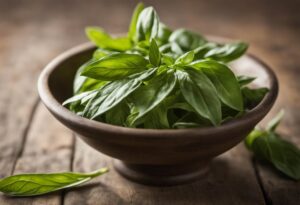

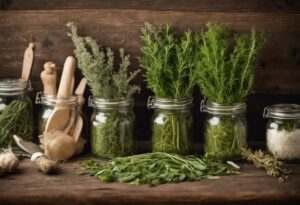

No comment yet, add your voice below!